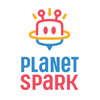
i
PowerSchool
India
Filter interviews by
PowerSchool India Interview Questions and Answers
40 Interview questions
Customer feedback can be gauged through surveys, interviews, analytics, and social media monitoring to enhance product development.
Conduct surveys to gather quantitative data on customer satisfaction and preferences. For example, use tools like SurveyMonkey.
Hold one-on-one interviews with key customers to gain qualitative insights into their experiences and needs.
Analyze user behavior through analytics tools (e.g....
Detailing my experience and skills relevant to the Technical Support Engineer role.
Education: Bachelor's degree in Computer Science, providing a strong foundation in technical concepts.
Experience: 3 years as a Technical Support Specialist, resolving customer issues via phone and email.
Skills: Proficient in troubleshooting hardware and software problems, including OS installations and network configurations.
Certifi...
My skills in problem-solving, communication, and technical knowledge make me an ideal fit for the Technical Support Engineer role.
Strong problem-solving skills: I have successfully resolved complex technical issues in my previous role, improving customer satisfaction.
Excellent communication: I can explain technical concepts clearly to non-technical users, ensuring they understand the solutions.
Technical expertise:...
Effective data loading strategies ensure data integrity and performance in ETL processes.
Use incremental loading to minimize data transfer, e.g., only load new or updated records.
Implement error handling to manage data quality issues, such as logging errors for review.
Optimize batch sizes for loading to balance performance and resource usage, e.g., load in batches of 1000 records.
Consider using staging tables to v...
Program to print Fibonacci series of N natural numbers.
Use a loop to generate Fibonacci series up to N numbers.
Start with 0 and 1 as the first two numbers in the series.
Each subsequent number is the sum of the two preceding numbers.
Repeat the process until N numbers are generated.
OOPS stands for Object-Oriented Programming System. It includes concepts like polymorphism, abstraction, inheritance, and encapsulation.
Polymorphism allows objects of different classes to be treated as objects of a common superclass. Example: a shape class with subclasses like circle and square.
Abstraction is the concept of hiding the implementation details and showing only the necessary features of an object. Exa...
Program to check if a number is prime
Iterate from 2 to square root of the number and check for divisibility
If the number is divisible by any number other than 1 and itself, it is not prime
Return true if the number is prime, false otherwise
Deploying a Flutter app on Play Store and App Store involves several steps including creating app bundles, setting up app listings, and submitting for review.
Create app bundles for Android and IPA files for iOS
Set up app listings with descriptions, screenshots, and keywords
Generate signing keys for both platforms
Submit the app for review on Play Store and App Store
Wait for approval and release the app to users
Flutter project file structure includes folders like lib, android, ios, and assets.
The 'lib' folder contains all the Dart code for the project.
The 'android' folder contains the Android-specific project files.
The 'ios' folder contains the iOS-specific project files.
The 'assets' folder is used to store images, fonts, and other static files used in the app.
Packages are collections of Dart code that provide functionality, while plugins are platform-specific code that interacts with native code.
Packages are written in Dart and can be used across different platforms.
Plugins are platform-specific and interact with native code for functionalities like accessing device hardware.
Examples of packages include http, shared_preferences, while examples of plugins include camera...
PowerSchool India Interview Experiences
43 interviews found
I applied via Campus Placement and was interviewed in Nov 2024. There were 3 interview rounds.
1 min to talk He can ask you anything from your resume,or to introduce yourself any experience or any topic from Resume to talk for 1 min
Written test on answering different customers queries questions which customer may face and how we handle in real life
(5 Questions)
- Q1. Introduction about yourself
- Q2. Walk through resume
- Ans.
Detailing my experience and skills relevant to the Technical Support Engineer role.
Education: Bachelor's degree in Computer Science, providing a strong foundation in technical concepts.
Experience: 3 years as a Technical Support Specialist, resolving customer issues via phone and email.
Skills: Proficient in troubleshooting hardware and software problems, including OS installations and network configurations.
Certificatio...
- Q3. Experience and project
- Q4. Why this role will suits yr skills
- Ans.
My skills in problem-solving, communication, and technical knowledge make me an ideal fit for the Technical Support Engineer role.
Strong problem-solving skills: I have successfully resolved complex technical issues in my previous role, improving customer satisfaction.
Excellent communication: I can explain technical concepts clearly to non-technical users, ensuring they understand the solutions.
Technical expertise: My b...
- Q5. Basically they select based on referrals so even you give good answer there are less chance you ll get selected 350+ people come for single role for around 30 vacancies
Interview Preparation Tips
I went for interview in 2019 as fresher , First round was CCAT , Where you will have to solve 30 questions in 15 minutes
Since there were too many people , Group discussion on various topics were held to filter more candidates
(1 Question)
- Q1. Once GD is passes , Technical interview for 20-30 minutes , Basic programming questions on any language , And detailed explanation was asked , They were trying to know if we are good enough in problem so...
(1 Question)
- Q1. And finally with the director , It was normal interview
On this round we have to speak for 1 min .they want communication
Scenario based questions
(2 Questions)
- Q1. Write query regarding product they asked
- Q2. Sales data they want for me
(1 Question)
- Q1. About project what type of problem I faced there
(1 Question)
- Q1. Are you comfortable in night shift.i said no.
- Ans.
No, I am not comfortable working night shifts.
I prefer working during the day as it aligns better with my natural sleep schedule
I find it difficult to stay alert and focused during night shifts
I have personal commitments that require me to be available during evenings and nights
Given one couple of DSA questions and asked to solve them
(1 Question)
- Q1. React state management
Aptitude test was for an hour
Coding test was through a website and it was kinda basic
(1 Question)
- Q1. Technical round was on OOps and some data structures.
(1 Question)
- Q1. Manager. round followed up by a directore round
(1 Question)
- Q1. Basic HR questions
I applied via Campus Placement and was interviewed in Dec 2024. There was 1 interview round.
Mainly focuses on communication skills with me they told 1round will be gd but they started asking questions from resume for shortlisting by communication
Easy question from python and sql
Aptitude and 1 sql query question
(2 Questions)
- Q1. Projects Description and details
- Q2. Salary discussion
I applied via Naukri.com and was interviewed in Nov 2023. There was 1 interview round.
(7 Questions)
- Q1. 1. Started with the Introduction? Ans; brief about yourself and previous company details along with technology used.
- Q2. 2. Explain specific role for your the current project End to End and most of the questions from previous project
- Q3. 3. Snowflake CDC process
- Q4. 4. I worked on DBT so most of the question on how to transform data, how to implement CDC process , macro's and different layers in DBT tool.
- Q5. 5. GIT related questions Ans: how Git is connected and explain how you create branch and merge the pull request etc..
- Q6. 6. Scenario based question on the data load.
- Ans.
Effective data loading strategies ensure data integrity and performance in ETL processes.
Use incremental loading to minimize data transfer, e.g., only load new or updated records.
Implement error handling to manage data quality issues, such as logging errors for review.
Optimize batch sizes for loading to balance performance and resource usage, e.g., load in batches of 1000 records.
Consider using staging tables to valida...
- Q7. 7. Windows functions
Interview Preparation Tips
- SQL
- DBT
- Cloud
Be confident on what you explain
Got offer and I am joining.
I applied via Referral and was interviewed in Mar 2024. There were 2 interview rounds.
Random on spot topics
(2 Questions)
- Q1. Basics of HTML and SQL
- Q2. Questions based on HTML tag, SQL commands
Interview Preparation Tips
I applied via Referral and was interviewed in Nov 2023. There was 1 interview round.
(6 Questions)
- Q1. Write a program that prints a Fibonacci series of N natural numbers.
- Ans.
Program to print Fibonacci series of N natural numbers.
Use a loop to generate Fibonacci series up to N numbers.
Start with 0 and 1 as the first two numbers in the series.
Each subsequent number is the sum of the two preceding numbers.
Repeat the process until N numbers are generated.
- Q2. Write a program to check if a number is prime.
- Ans.
Program to check if a number is prime
Iterate from 2 to square root of the number and check for divisibility
If the number is divisible by any number other than 1 and itself, it is not prime
Return true if the number is prime, false otherwise
- Q3. What is OOPS concept? Explain polymorphism, abstraction, inheritance, encapsulation.
- Ans.
OOPS stands for Object-Oriented Programming System. It includes concepts like polymorphism, abstraction, inheritance, and encapsulation.
Polymorphism allows objects of different classes to be treated as objects of a common superclass. Example: a shape class with subclasses like circle and square.
Abstraction is the concept of hiding the implementation details and showing only the necessary features of an object. Example:...
- Q4. What is the file structure in a flutter project?
- Ans.
Flutter project file structure includes folders like lib, android, ios, and assets.
The 'lib' folder contains all the Dart code for the project.
The 'android' folder contains the Android-specific project files.
The 'ios' folder contains the iOS-specific project files.
The 'assets' folder is used to store images, fonts, and other static files used in the app.
- Q5. Explain the entire process of deploying a flutter app on Play Store and App Store.
- Ans.
Deploying a Flutter app on Play Store and App Store involves several steps including creating app bundles, setting up app listings, and submitting for review.
Create app bundles for Android and IPA files for iOS
Set up app listings with descriptions, screenshots, and keywords
Generate signing keys for both platforms
Submit the app for review on Play Store and App Store
Wait for approval and release the app to users
- Q6. Difference between packages and plugins.
- Ans.
Packages are collections of Dart code that provide functionality, while plugins are platform-specific code that interacts with native code.
Packages are written in Dart and can be used across different platforms.
Plugins are platform-specific and interact with native code for functionalities like accessing device hardware.
Examples of packages include http, shared_preferences, while examples of plugins include camera, loc...
Interview Preparation Tips
- DSA
Skills evaluated in this interview
Top trending discussions






PowerSchool India Interview FAQs
Some of the top questions asked at the PowerSchool India interview -
The duration of PowerSchool India interview process can vary, but typically it takes about less than 2 weeks to complete.
Tell us how to improve this page.
PowerSchool India Interviews By Designations
- PowerSchool India Technical Support Engineer Interview Questions
- PowerSchool India Software Engineer Interview Questions
- PowerSchool India Associate Software Engineer Interview Questions
- PowerSchool India Devops Engineer Interview Questions
- PowerSchool India L1 Technical Support Engineer Interview Questions
- PowerSchool India Team Lead Interview Questions
- PowerSchool India Customer Service Associate Interview Questions
- PowerSchool India Senior Consultant Interview Questions
- Show more
Interview Questions for Popular Designations
- Technical Support Engineer Interview Questions
- Software Engineer Interview Questions
- Associate Interview Questions
- Analyst Interview Questions
- Associate Software Engineer Interview Questions
- Graduate Engineer Trainee (Get) Interview Questions
- Java Developer Interview Questions
- Accountant Interview Questions
- Show more
Overall Interview Experience Rating
based on 37 interview experiences
Difficulty level
Duration
Interview Questions from Similar Companies
PowerSchool India Reviews and Ratings
based on 318 reviews
Rating in categories
|
Senior Software Engineer
139
salaries
| ₹16.3 L/yr - ₹29.3 L/yr |
|
Software Engineer
108
salaries
| ₹8.5 L/yr - ₹19.6 L/yr |
|
Technical Support Engineer
94
salaries
| ₹4.2 L/yr - ₹10 L/yr |
|
Software Engineer II
55
salaries
| ₹8.5 L/yr - ₹27.2 L/yr |
|
Software Engineer2
54
salaries
| ₹13.4 L/yr - ₹23 L/yr |

BYJU'S

Whitehat jr

Planet Spark

Unacademy
- Home >
- Interviews >
- PowerSchool India Interview Questions












